Review: Motorola Droid Ultra for Verizon Wireless
Aug 22, 2013, 5:01 PM by Eric M. Zeman
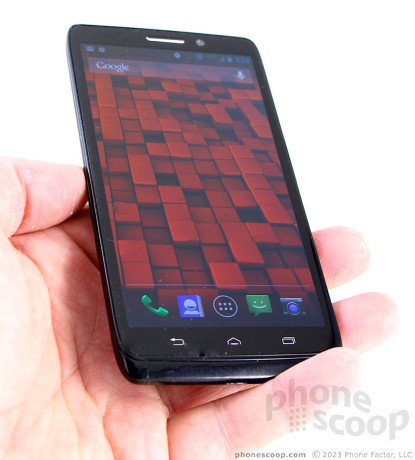
Motorola's newest Droid for Verizon Wireless is thin, light, and sleek. It's a solid effort from Motorola, but doesn't earn top marks across the board.
Form
Is It Your Type?
Motorola has updated its entire Droid lineup for Verizon Wireless, and the Ultra is the thinnest of the lot. It's even thinner than last year's model and still manages to make improvements in several areas. If you're the type who wants the slimmest possible device without compromises, the Ultra is a good place to start.
Body
The Motorola Droid Ultra is as thin and light as they come, but it still packs a huge screen and a 2130 mAh battery. It replaces last year's RAZR HD, which was an incredible feat of engineering. The Droid Ultra loses a bit of personality along the way, but manages to outdo its predecessor in most every other way.
Motorola employed what we like to call the "smoosh effect" to create last year's RAZR HD. In order to flatten the phone, the length and width were increased, as if the entire phone has been smooshed by a press. The result was a slightly awkward-looking phone, especially considering the small screen and large bezel. Motorola resolved that issue with the Droid Ultra, which has a larger display filling up more of the front of the phone. It gives the device a more balanced look. Let's not kid ourselves, though. It's a large, black slab that resembles many other devices in the market. It just happens to be a thin, large, black slab. (It's also available in red.)
The front of the Ultra is pitch black, with only the three white buttons on the front breaking up the inky darkness. The bulk of the phone is covered in a glossy finish that I dislike. Where last year's model had a nice, matte Kevlar lining on the back, the Ultra is super smooth and reflective. It attracts more gross grime than any other phone I've tested in recent memory. The back surface, in particular, is nothing but a fingerprint-covered mess. It has a Kevlar look to it, but the Kevlar weaving is buried under the gloss, giving it a slight three-dimensional look. I don't like the feel of the plastics, which come off cheap. The entire phone is pieced together tightly, though. Everything about it seems to be solid and strong.
If ever there were a pocketable device, it is the Droid Ultra. The phone measures only 7.2mm thick on average, though there's a moderate hump closer to the top where the camera module is. Even so, it will slip into even the tightest pocket.
The display hides well in the thinner bezel of the Ultra. There's a thin slit carved into the glass above the screen where the earpiece is. The three capacitive buttons below the screen are easy to see, but not feel. They offer haptic feedback when pressed if that's what you want. The main camera is positioned near the top on the back. The module also houses the flash and the speakerphone.
The stereo headphone jack is on top and the microUSB port is on the bottom. The screen lock button and volume toggle are both on the right edge of the Ultra; there's nothing on the left edge. Motorola did a good job giving the Ultra's buttons an excellent profile and amazing travel and feedback. Both the screen lock button and volume toggle have raised edges and a ribbed texture that make them easy to find. The travel and feedback is very satisfying.
Everything else is sealed inside. The battery is inaccessible. There's also no microSD card support. This means no swapping batteries, and no extra storage. You're limited to the 16GB with which the Ultra ships. The SIM card is well hidden in the volume toggle, believe it or not. There's the smallest little ledge on the bottom of the volume toggle that you can yank with your thumbnail. Do that, and the SIM tray will pop out.
I like that the Droid Ultra has a more refined look, but I prefered the matte finish of the RAZR HD to the glossy finish of the Ultra. Further, the heterogenous materials may give the Ultra a more uniform look, but it waters down the appearance enough to leave it somewhat bland.
Performance
Screen
The Ultra's display measures 5.0 inches across the diagonal and includes 1280 x 720 pixels. It's an OLED panel, rather than an LCD screen. As with many OLED panels, the brightness is off the hook, though colors are a wee bit oversaturated. Sharpness is good, though it's not the best given that we've seen smaller displays with more pixels this year. It looks really nice, but other phones such as the Moto X have sharper text and icons. The Ultra's display is by no means bad. In fact, the brightness alone makes it worth recommending. Viewing angles are decent, but there's some brightness drop-off when the phone is tilted. It would have been nice to see Motorola go for a full HD display, though my guess is most people won't complain.
Signal
The Ultra was a signal hound. It remained connected to Verizon's LTE 4G network no matter where I took it. It performed a bit above par with respect to other Verizon devices in the same location. I had no trouble connecting calls anywhere in the metro NYC area. The Ultra didn't drop any calls and it did not miss any. Signal performance generally did not have an effect on data speeds, either. They were consistent, though not the fastest I've seen on Verizon's LTE 4G network.
Sound
The Ultra is an excellent voice phone. Voices were perfectly clear in the earpiece and extremely loud. In fact, you'll hurt your ears if you set the volume all the way up. You can hear most calls, even in loud places, with the volume set about two-thirds of the way up. I was pleased with the warmth of voices coming through the speaker, and those with whom I spoke said I sounded like I was in the same room with them. The speakerphone offers just as much clarity and warmth, but not quite as much volume. Ringers and alerts can be set to blistering volumes. The vibrate alert was mediocre.
Battery
I found battery life on the Ultra to be inconsistent at best. It's something that requires strict monitoring. I easily got two days out of it on standby (just pulling email, some casual browsing, but no real screen time). Using it consistently throughout the day for email, RSS, Twitter, Facebook, browsing, calls, and so on takes more of a toll. I was able to get it to last from 6AM to 4PM with very heavy use one day, and 8AM to 8PM the next day with about the same amount of use. I kept the screen brightness set at 50% and made sure to stream music over the network, spend time on the phone, etc. Bottom line, power users can expect about 12 hours of battery life. More conservative users might be able to get an entire day out of it.
Basics
Menus
The Ultra runs an essentially clean stock version of Android 4.2 Jelly Bean. Unbelievably, Verizon Wireless has left the user interface alone. Android 4.2 includes lock screen widgets, which let you peek at your SMS or Gmail inbox without unlocking the phone. It also has notification shade controls that make it easy to switch off Wi-Fi, for example.
There are plenty of home screen panels for user customization, the main app menu can be arranged at will, and the ability to place apps in folders on the home screens lets you organize the device how you like.
Motorola has a handy home screen widget that we've seen before on its Droids. It's a clock that holds the alarm app. There's a little "+" sign next to the clock. Press that, and the widget expands to show the weather as well as provide access to some of the phone's settings. It's a helpful widget, but of course you can get rid of it if you don't like it.
Performance of the Ultra's software is incredibly fast. The phone has a dual-core 1.7GHz Snapdragon S4 Pro processor on board, (the same chipset as the Moto X,) and this engine provides all the power the Ultra needs. I didn't notice any performance problems at all while testing the phone.
Calls and Contacts
Pressing the phone button on the home screen brings you to the dialpad. You can swipe sideways to access the call log, and your favorite contacts. The call log provides some information about calls (time, duration) in addition to shortcuts for redialing or sending a text message to that number.
The Ultra has a Verizon app on board called Caller Name ID. It costs $2.99 per month, but will provide the name, picture, city, and state of what would otherwise be "unknown" or "blocked" callers. It's a handy tool if you're serious about screening your calls.
Contacts are automatically synced with your Google accounts and whatever other contact databases you might wish. Contact cards, or direct dial or direct message shortcuts can be placed on the home screens, which give you instant access to your besties. You can also add contacts to your Favorites list — which is visible in the phone application and includes a homescreen widget.
Messaging
The Ultra comes with the same stock Android communications apps that are on every other Android device. That means Gmail, email, SMS, Hangouts, and Google+ (no more Google+ Messenger!). There are no third-party communication tools on the phone when you pull it out of the box; Google is all you get. If you want more, the Google Play Store has plenty to wade through. The stock tools work well.
The device also has the generic Emergency Alerts app, which provides messages when there are emergencies nearby. Weather and Amber alerts can be turned off, if you wish.
Moto Apps
The Droid Ultra carries over many of the same custom-developed applications that Motorola created for the Moto X. The big ones are Active Display and Touchless Control.
Active Display
Active Display brings the clock and notifications to the screen (when it is locked and off) without turning on the whole display. Instead, it only shows the clock and notifications in white on a black screen. You don't have to push any buttons to check the time or see if you have any new emails. If the Ultra is sitting on a desk, it will automatically light up the Active Display when a new email or message arrives. It will then pulse on and off with that notification until dismissed. Active Display will turn on when you nudge the Ultra, when you turn it over, when you pull it out of your pocket or bag, when you shake it, and pretty much any time you move the phone. At any moment you might want to see the time and notifications, the Ultra shows you.
More than two dozen apps are able to provide Active Display notifications, and you can interact with the notifications. That's what makes them so useful.
Take Gmail, for example. The Gmail icon will be displayed in a little circle under the clock on the Active Display. Press-and-hold the icon, and the notification expands to show the sender details and subject line from the emails. (If there's just one email, it will reveal the first line of the message, as well.) At this moment, you can do one of several things: swipe sideways to dismiss the notification, swipe up to open Gmail and go to the message, or swipe down to unlock the phone. The same behaviors apply for a missed call, Google+ interaction, or a text message, and so on.
There are limitations. The biggest is that you can only interact with the most recent notification. So if you get a text message and then three emails, you can't peek at the text message, you can only peek at the three emails.
After using Active DIsplay first on the Moto X and then the Droid Ultra, I've grown to really like it.
Touchless Control
Touchless Control is Google Now on steroids. Google Now has been available on Android devices for the better part of a year and is a really useful tool for performing searches with your voice. (It's a bit like Apple's Siri.) One of its big limitations is that you have to wake the device up before you can use it. Touchless Control solves this issue. Touchless Control is always listening, and, thanks to the hardware running it, you don't have to worry about it killing your battery.
Touchless Control must first be trained to recognize the owner's voice. In a quiet environment, you speak "OK Google Now" three times. This catchphrase is then what you use to wake the Ultra and launch Google Now. According to Google, the phone should only respond to the owner's voice, but there are cases in which people with similar-sounding voices can open Google Now with the catchphrase. (And no, the catchphrase cannot be customized.) The idea is to let people interact with their phones without requiring that they actually pick them up.
With the Ultra sitting on my desk, I can say, "OK Google Now, call Mom's cell phone," and that's what the Ultra will do. I don't have to touch anything else. The device provides visual feedback on the screen telling you what it is doing, and will speak that feedback, too, if you want it to. Making phone calls is the only task Touchless Control can perform if you've locked the Ultra with a code, though. If you say, "OK Google Now, who won the Yankee's game last night?" you'll have to unlock the Ultra before it will give you the search result. That limitation aside, there's a lot that Touchless Control can do.
I was able to make phone calls, open Gmail, use Google Play Music, get directions, search for anything, interact with the calendar, and so on. Google Now responds well to natural language requests and its voice-transcription capability is second to none. It's much, much faster than Siri on the iPhone, and better able to handle requests that arrive in the form of long sentences. It's still not perfect, though. All too often Touchless Control performed a Google Search when I really wanted it to open or use an app.
Moto Assist
Moto Assist is a tool meant to help save you some trouble when using the Ultra. It monitors the Ultra for three scenarios — driving, meeting, and sleeping — and controls the Ultra's behaviors accordingly.
First, driving: The Ultra will automatically sense when the device is moving fast enough to be in a car. I tried to use Touchless Control to make a call when driving and Moto Assist popped up first and asked if the device should be put into Car Mode. It can also do things such as read incoming text messages aloud, speak the names of people who call, and automatically send quick replies, such as,"I'm driving and will get back to you soon."
The meeting and sleeping functions are essentially the same and are meant to help prevent interruptions. The meeting function turns on automatically in tune with your calendar. During meetings, for example, the Ultra can be set to silence, allow favorites to ring the phone, or to ring when the same number calls multiple times. It can also send auto-replies.
The sleeping mode is simply set to come on and go off at certain predetermined hours at night. It is a bit less feature-rich and only silences the device between set hours. Like Apple's Do Not Disturb, it will ring if a predetermined favorite calls, or when the same number calls multiple times.
Migrate
Lastly, there's the Migrate app. This is meant to help you transfer all your content from one device to another. It works with media, call and text history, as well as contacts that may not be synced with Google. The tool makes use of a QR code scanner to pair the two devices and then uses Google's servers to migrate the data between the phones behind the scenes. It makes it pretty easy to send your data to a new device.
Extras
Media
The Google Play Store is your one-stop-shop for music, movies, TV shows, books, and magazines. It addition to the Store itself, the Ultra comes with all the ancillary apps that are used to interact with each type of content (Play Music, Play Movies, etc.).
Of course, Verizon had to stick a few extras on board. You'll find Amazon Kindle and Audible for book reading, Amazon MP3 for music purchases, NFL Mobile for your football cravings, and Viewdini to search for online video content. All of these apps have been around awhile and work well.
Camera
The Ultra carries over the exact same camera app from the Moto X. I don't care for it all that much.
The camera UI is bare bones. There are only two buttons: one for the video camera and another for the user-facing camera. (Every so often, a little "?" appears in the upper right corner. Press it to watch a helpful tutorial.)
All the settings and controls are accessed by swiping from the left side of the viewfinder towards the center. This opens the control dial that has all the options. The Ultra includes HDR (which can be set to come on automatically) and panorama shooting modes, and the flash, geo-tagging, shutter noise, and touch-to-shoot features can be turned on or off. It also has the shake-to-wake feature that opens the camera from idle mode when the phone is twisted.
An up/down swipe gesture zooms in and out. One thing I really like is that the camera has an always-on burst mode. Press the screen and hold, and the Ultra will focus and then fire of two shots per second until you take your finger off the screen.
The camera software is step up from stock Android, but barely. You can't adjust scenes, ISO, brightness, or white balance. It's rather limiting if you like to take creative control over the camera.
Photos
The Ultra has the same 10-megapixel sensor found in the Moto X and produced images of similar quality. That means that they were pretty good, but short of great. Shots I captured outdoors during the day were clean, in focus, and showed good exposure and color. Despite its claims to the contrary, the Ultra struggles with low light shooting. The images are accurate as far as exposure and white balance are concerned, but the Ultra can't focus at all in low light. It's a shame. The flash doesn't help it focus, either. At the end of the day, it is a serviceable camera, but there are much better ones out there.
Video
The overall results from the video camera are better than those of the regular camera, mostly thanks to improved focus. The video camera produces sharp results, and manages to get exposure and white balance right most of the time, as well. There are better cameras available, but there are plenty worse ones, too. The 1080p HD results obtained with the Droid Ultra should appease most people.
Gallery
The gallery app is the same one that comes with most Android devices. It doesn't offer anything new or different compared to other Jelly Bean phones. It's acceptable for managing photo albums and sharing photos with social networks. It also has a some simple editing features, such as crop, rotate, red-eye reduction, and filters that help correct color, exposure, and other issues.
Apps
There are a lot of Verizon-branded apps on board, as well as useless extras. You'll find Amazon, and Amazon App Store; Caller Name IS, IMDb, and QuickOffice; as well as My Verizon Mobile, Verizon Tones, VZ Navigator, and VZ Security. Most of these cannot be deleted, but there's still a fair amount of storage left on the Ultra for your own apps and content.
Bluetooth
The Ultra's Bluetooth radio worked well. I was able to connect with an array of other gadgets and pass phone calls and music to mono and stereo headphones. Calls sounded great through my car's handsfree system. Music also sounded good via Bluetooth. Like the Moto X, however, the Ultra cannot push files to other devices. I was able to pair it with my PC and another phone, but was unable to send an image file to either device. Motorola hasn't said when this might be resolved.
Browser
The Ultra includes Google's Chrome browser. Chrome worked perfectly at rendering web sites over Verizon's network. Web sites were reasonably quick to load, for the most part, and web sites looked good on the Ultra's display.
Clock
Thanks to the Active Display feature, there's almost always a clock visible on the Ultra, even when the phone is idle. It could be a little bigger/brighter, but it can be read in most environments other than under direct sunlight.
GPS
The Ultra's GPS radio worked just fine. Both VZ Navigator and Google Maps are on board. You know the drill here. VZ Navigator is good for plotting routes, but costs $10 per month. Google Maps is also good at plotting routes, but also offers a wide array of search and navigation options that are excellent. The GPS radio was very quick; it pinpointed me to within about 15 feet in 5 to 10 seconds.
Wrap-up
The Motorola Droid Ultra is a good effort that gets solid marks on most of the basics. There are few phones that offer as thin a profile and as large a screen as the Ultra. The device locks onto Verizon's network well, and offers great voice performance. I wish battery life were a bit better, but it still manages to get through most of a solid working day. It's a bummer that the battery cannot be accessed, and that the Ultra doesn't support expandable memory.
The Ultra's software is close to stock Android, which many will appreciate. The extras tossed in by Motorola, such as Active Display and Touchless Control, help give the Ultra its own personality and may change how you interact with your phone. I only wish the camera — and the camera software — performed better.
The Droid Ultra carries the same price as competing models from HTC, Samsung, and Apple. I'd recommend it to people who are fans of Motorola, Google, and what they're trying to do with software.
Comments
At least the Droid Maxx has a matte back?


















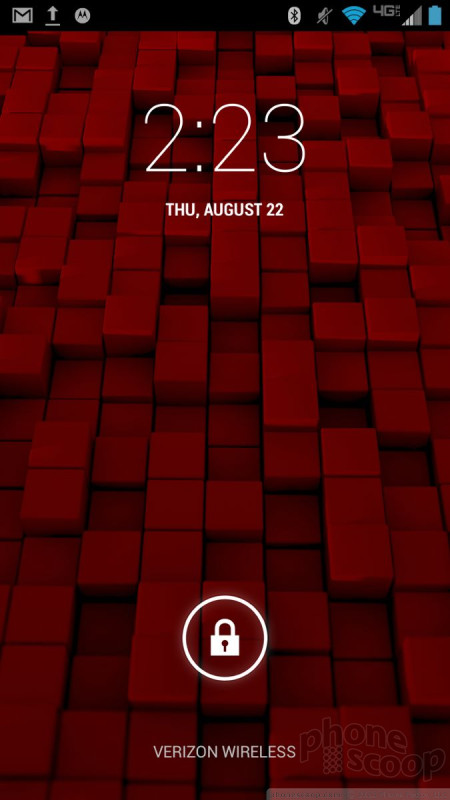







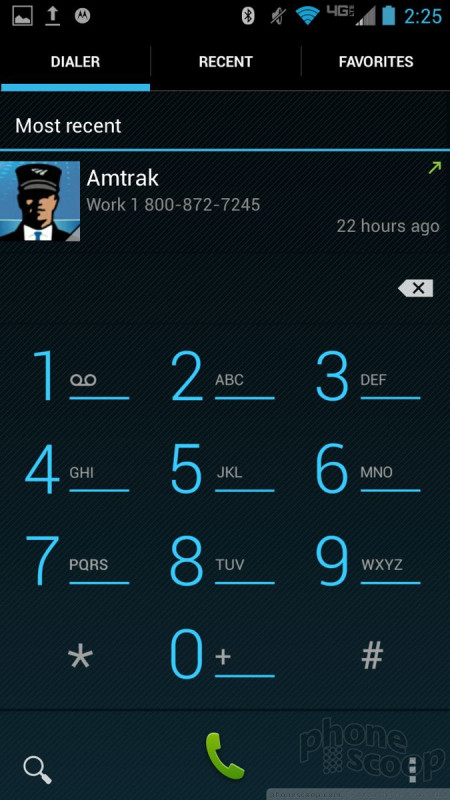





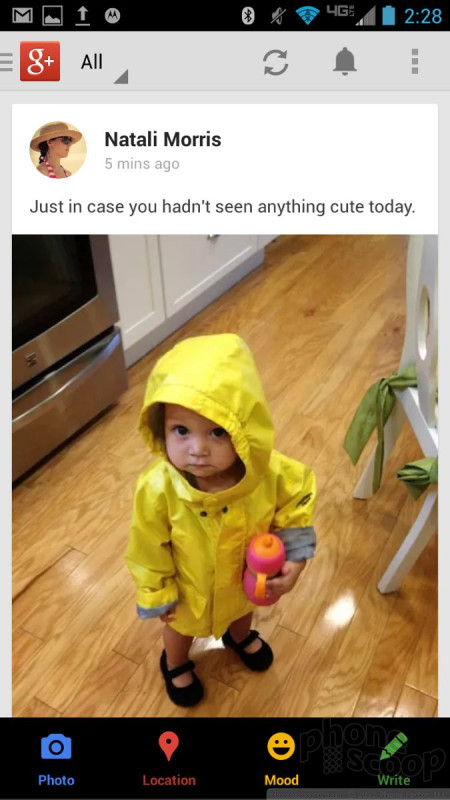





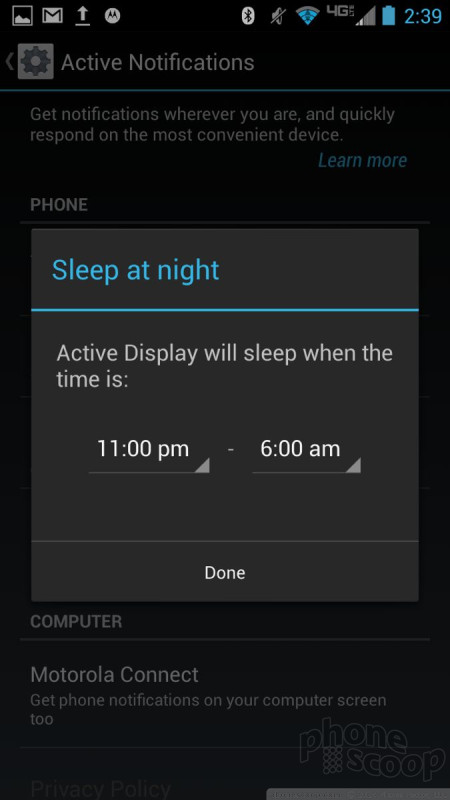



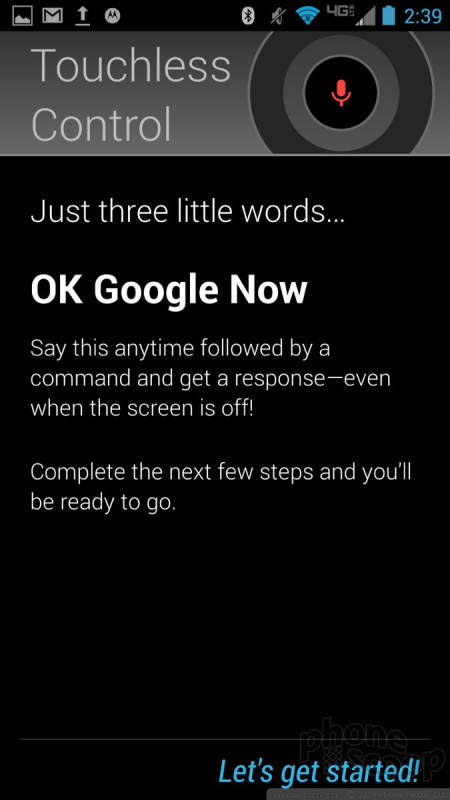





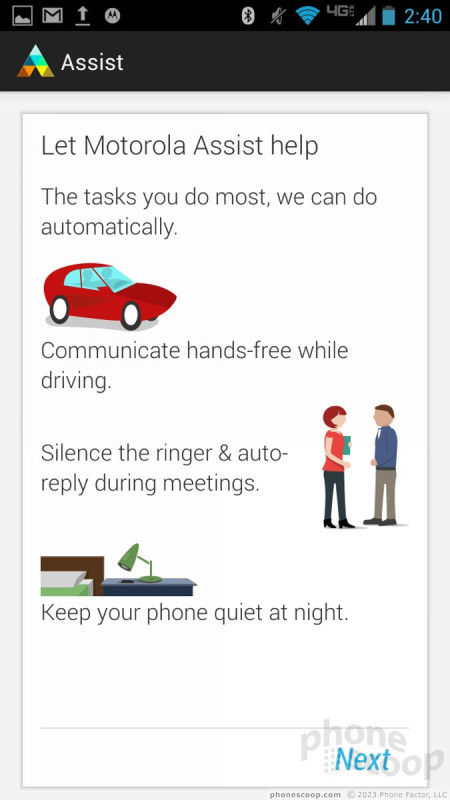





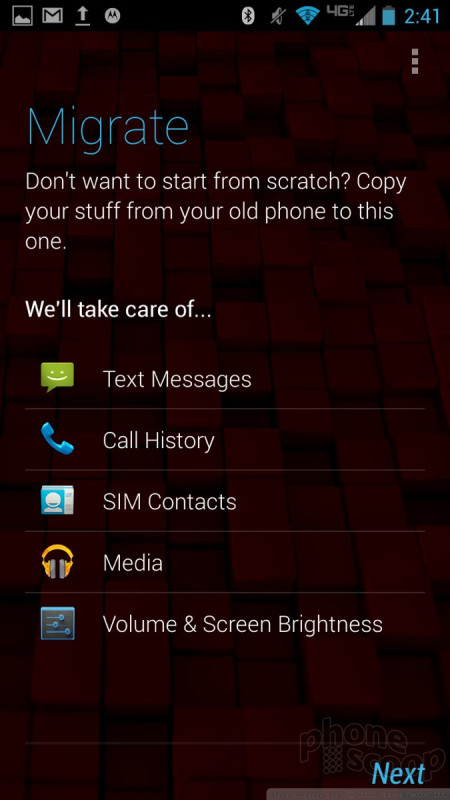



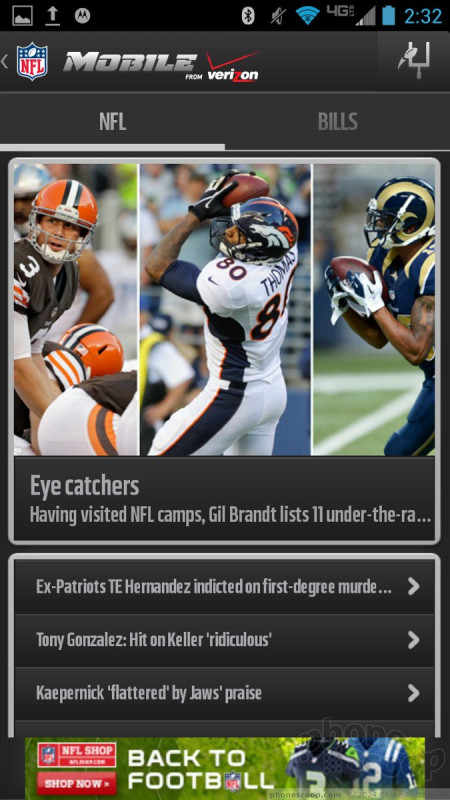







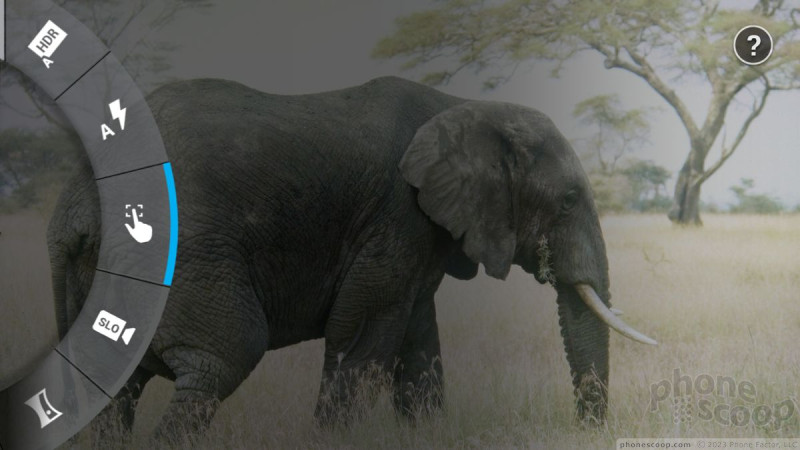



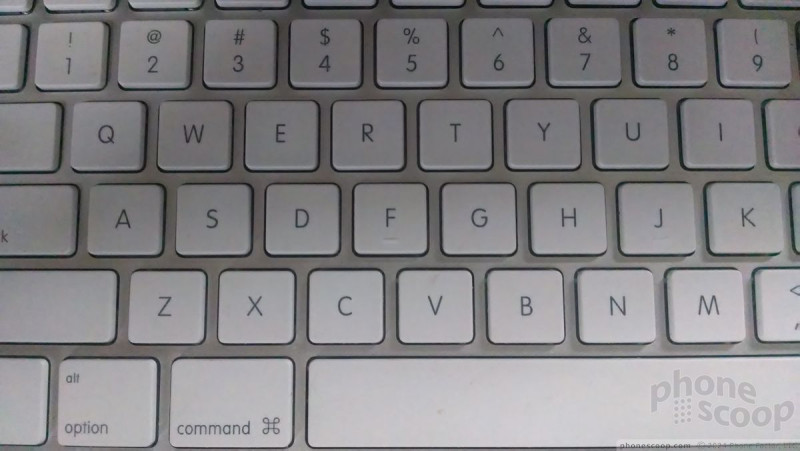















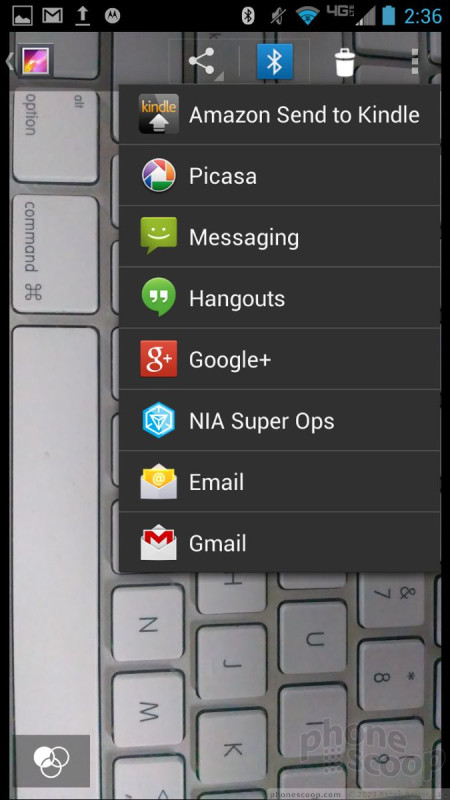




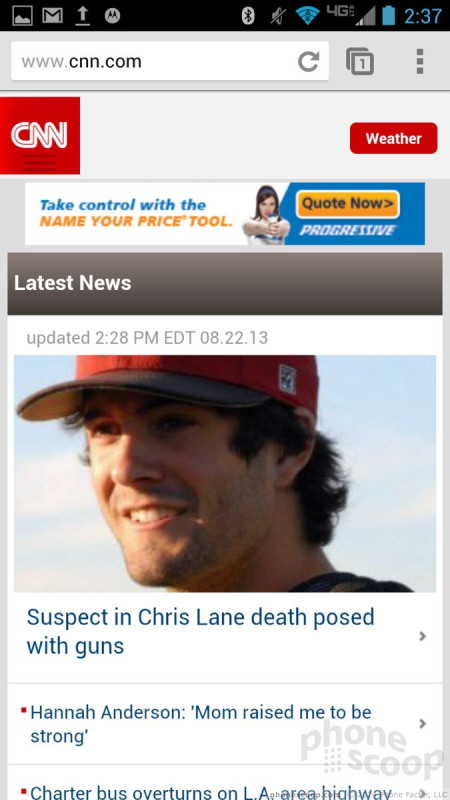




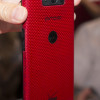 Hands On with the Motorola Droid Ultra, Mini, and Maxx
Hands On with the Motorola Droid Ultra, Mini, and Maxx
 Liveblog of Verizon's 2013 Droid Event
Liveblog of Verizon's 2013 Droid Event
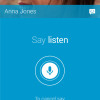 Motorola Makes Moto Voice Available to 2013 Droids
Motorola Makes Moto Voice Available to 2013 Droids
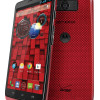 Verizon Intros 2013 Motorola Droid Lineup
Verizon Intros 2013 Motorola Droid Lineup
 Motorola Droid Ultra
Motorola Droid Ultra





